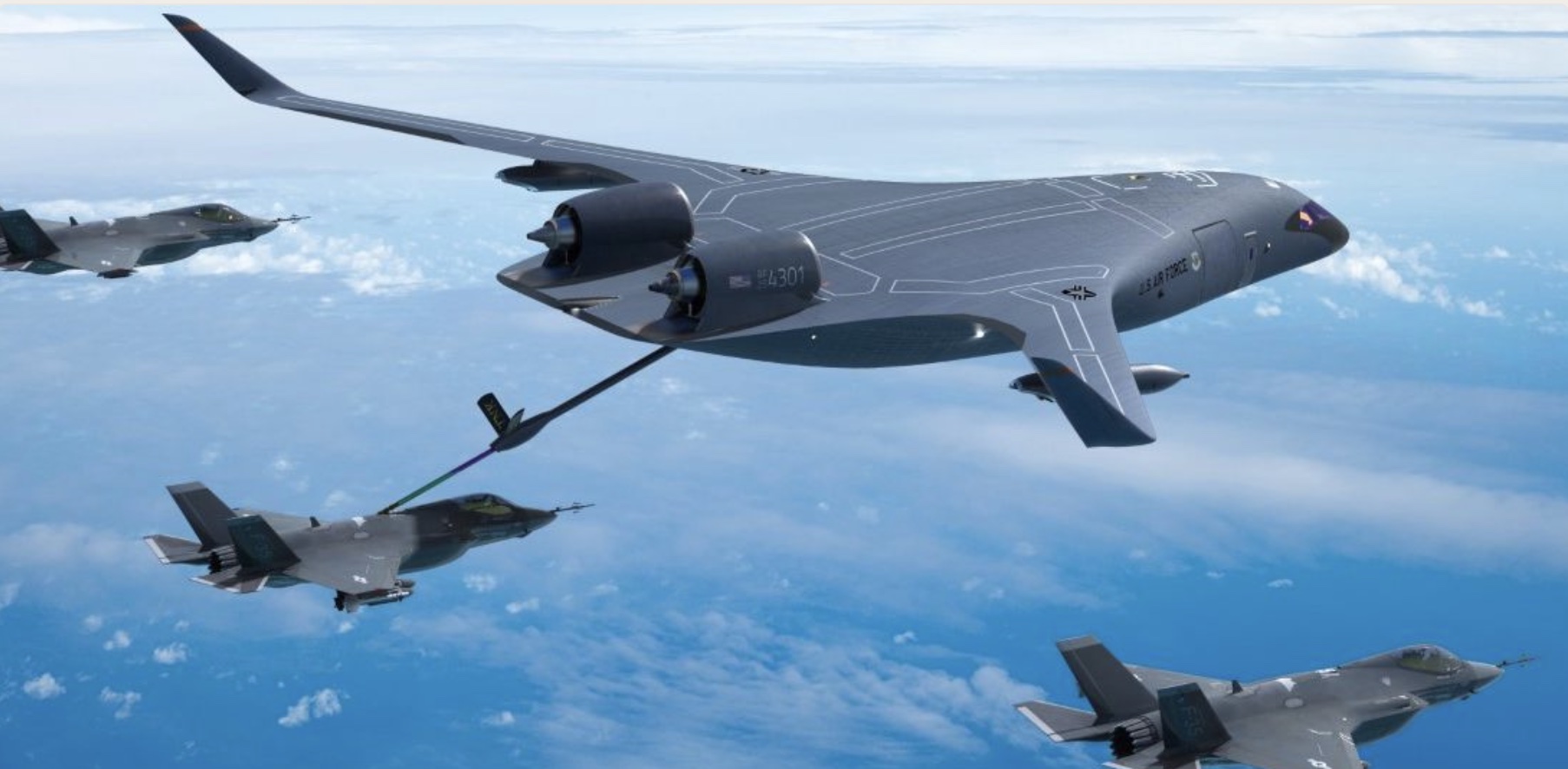

A running joke in the Air Force’s tanker community — so widespread that a former Secretary of the Air Force once told it on NPR — sums up the decades of difficulty the service has faced trying to replace the nearly 70-year-old KC-135 as its primary air-to-air refueler.
The joke is about the Air Force pilot who, one day, will be at the controls for the very last KC-135 flight — and that pilot’s mom.
“The mother of the last pilot for the KC-135,” then-Secretary of the Air Force Michael Wynne told NPR in 2006, “has actually not been born yet.”
Whether the widely-told joke was technically true in 2006 or if it is now, the Air Force took a major step Wednesday towards developing its tanker fleet of the future. Secretary of the Air Force Frank Kendall announced the service would spend a quarter of a billion dollars in the next four years to develop a large “blended wing” aircraft that might one day become an advanced — even stealthy — air-to-air tanker.
The service tapped JetZero, a start-up aviation company based in Long Beach, CA and backed by Northrup Grumman, to build a prototype aircraft that would demonstrate whether a large-scale blended wing design could be used as a tanker or transport aircraft.
JetZero’s website said the company is aiming for a first flight as soon as 2030, while an Air Force press release on the deal said it could come as early as 2027. With either date, a final service-ready design for a tanker or other military-spec aircraft, would still be years away.
“Blended wing body aircraft have the potential to significantly reduce fuel demand and increase global reach,” said Kendall in the press release. “Moving forces and cargo quickly, efficiently, and over long distance is a critical capability to enable national security strategy.”
The concept of a blended wing is not new to aviation. Planes whose wings double as its structural body — as opposed to a traditional ‘tube-and-wing’ design — include the B-2 and newer B-21 Raider, as well as older planes like the YB-49. While current tankers and transport aircraft account for about 60% of the Air Force’s fuel use, a blended wing design, the Air Force said, is about 30% more efficient than a comparable tube-and-wing aircraft.
But those designs are also more complicated to design and build, with trickier aerodynamics in flight.
Subscribe to Task & Purpose Today. Get the latest military news and culture in your inbox daily.
The JetZero design, the Air Force said, is not intended to lead directly to a new operational aircraft but instead would “mature [blended wing] technology and demonstrate its capabilities, giving the department and commercial industry more options for future air platforms.”
The $235 million contract, the Air Force said, will “fast-track” the development of the JetZero blended wing design and will be a joint project with the Air Force, NASA and other agencies.
Replacing its tankers has long been a priority for the Air Force, which still relies on the nearly-70-year old KC-135 as its primary air-to-air tanker. The Air Force operates 59 KC-10s and is beginning to phase them out, while it still flies close to 400 KC-135s. The more modern KC-46 was just cleared for worldwide deployment in late 2022 after a decade of delays and maintenance issues.
All three of the Air Force’s tankers are based on commercial jetliners. The newest of them, the KC-46, is based on the Boeing 767, which first flew in 1981.
US Air Force tankers are unique in the world of flying, using a large, winged boom to connect to refueling aircraft. A specially trained crew member ‘flies the boom’ during refueling, guiding the nozzle into a port on the receiving aircraft. The boom allows fuel to transfer through a solid pipe at over 1,000 gallons per minute, three or four times faster than other refueling methods, mandatory for large Air Force bombers and cargo jets flying international distances.
The Marines, Navy and all US military helicopters refuel with a simpler “drogue-and-hose” system in which a tanker — often a C-130 variant — trails a hose behind as it flies, allowing refueling aircraft to approach and connect on their own. The system delivers fuel at 300 or 400 gallons per minute, but does not require extra crew and takes up almost no space, allowing the tanker to be tasked with other cargo-related missions.
The latest on Task & Purpose
- Air Force Combat Controllers might scrap dive school during training pipeline
- Army chief warrant officer 5 receives Soldier’s Medal for saving people from house fire
- 4 US Navy destroyers respond to Russian and Chinese ships near Alaska
- Chinese troops vow they are willing to die in fight for Taiwan
- ‘He was willing to sacrifice himself:’ Army veteran killed in Ukraine